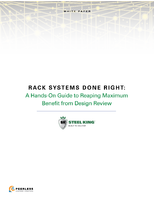Tilt Switches offer adjustable deceleration time.
Share:
Press Release Summary:

Offering remote adjustment of zero point, mercury-free N3 and N4 are based on capacitive measuring procedure and have monitored area of ±60°. RoHS-compliant, single-axle (N3) and dual-axle (N4) products let users select 2 digital outputs or 2 analog signals (4-20 mA current or 0.5-4.5 V voltage). Per inclination axle (x-/y-axis), switching points can be defined with 2 in positive range and 2 in negative range. Linkage of switching points is variable and can be defined as AND or OR.
Original Press Release:
N3/N4 Tilt Switches
Whether at the platform of a lifting ramp or the fork tree of a stacker, even with difficult installation conditions the new, mercury-free tilt switches N3/N4 of elobau gives an easy handling.
Because with a remote control the user can adjust the zero-point easily. In addition they offer a large monitored area of ± 60°.
The tilt switches N3/N4 are based on a capacitive measuring procedure and are RoHs conformal therefore. The variant with one axle N3 and the biaxial N4 are not only more environmentally conscious, but on original side also more versatile than past mercury alternatives. While with these only two digital outputs were possible, the user can select with N3/N4 between two digital and at the same time two analog signals. The analog signals are available in the form of current or voltage (4 to 20 mA or 0.5 to 4.5 V).
With the digital signals relays are headed, whereby breaking capacity amounts to maximally 60 V (1 A, 30 W/VA). The inclination range of the biaxial N4 amounts to ± 60°. Per inclination axle (x and/or y axis) switching points can be defined, two in the positive and two in the negative range.
The linkage of the individual switching points is variable, it can be linked "AND" or "OR". It is an advantage that for the switching outputs, the deceleration time is adjustable. This function is important to filter out e.g. engine vibrations at vehicles. So there is no influence of the result of measurement.
A special highlight of the tilt sensor is its possibility for the remote adjustment. The equipment is delivered with an adjusted zero-situation. This can again be set however by the user with an infrared hand transmitter. That makes this sensor suitable for unfavorable installation positions. In order to reduce the influence of unevenness of the underground, the inclination sensor is installed on three small-area leverages.
There is also a variant, which can be cultivated around 90° vertically rotated. The tilt switch is laid out to the protection class IP67 and ensure for example the employment at vehicles in external areas. Its output signals can be visualized over a 24-LED-instrument. If a redundant solution is necessary for safety-relevant employments, another sensor can be set directly on the housing.




